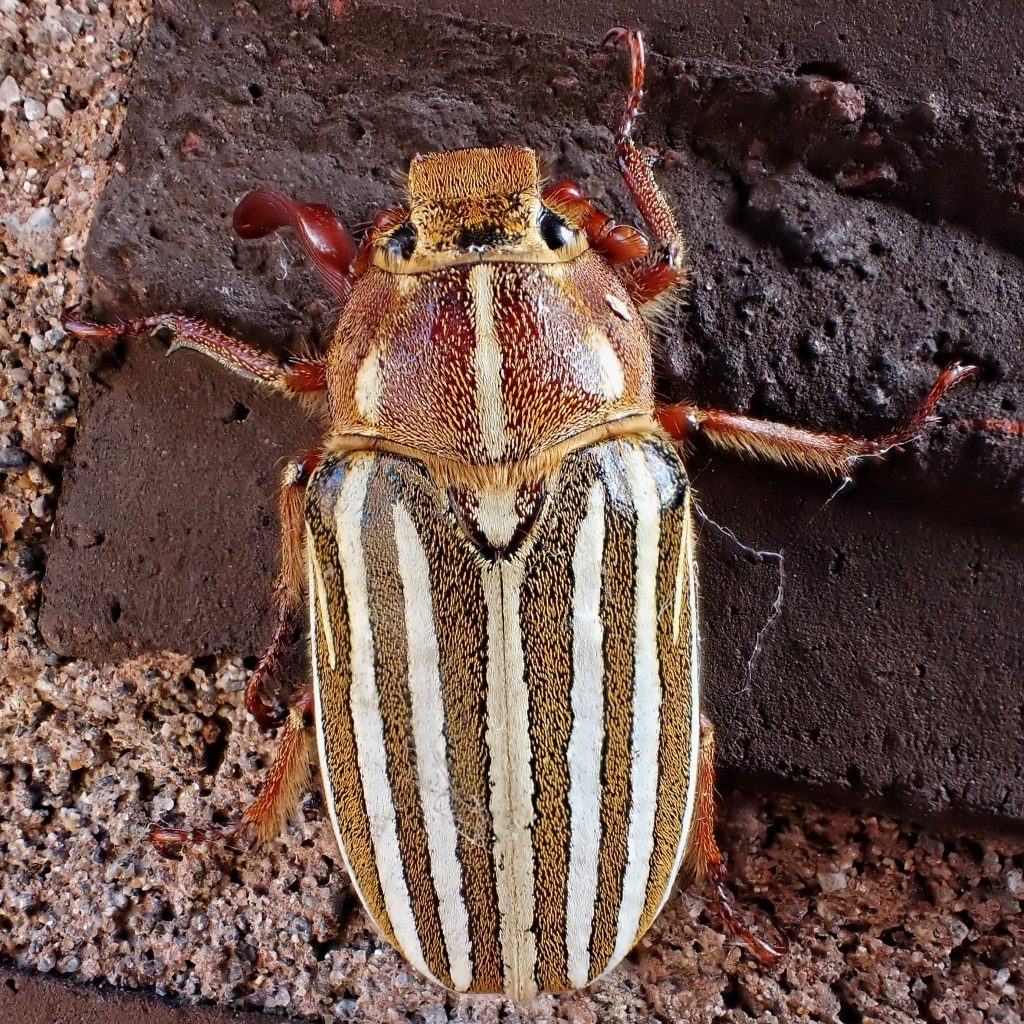
They say these big scarab beetles (family Scarabaeidae) will hiss at you, but I’ve never had that pleasure, though one did nearly kill me one hot summer night. Thanks to a correction from Merrill Peterson I now know that they apparently cause the hissing by squeezing air out through the spiracles, which are openings to the respiratory system that are arranged along the body. It’s also said that the males can make a noise by rubbing together the large, lamellar plates at the end of their antennae, which they primarily use to detect pheromones produced by breeding ready females. But I’ve never heard this either.
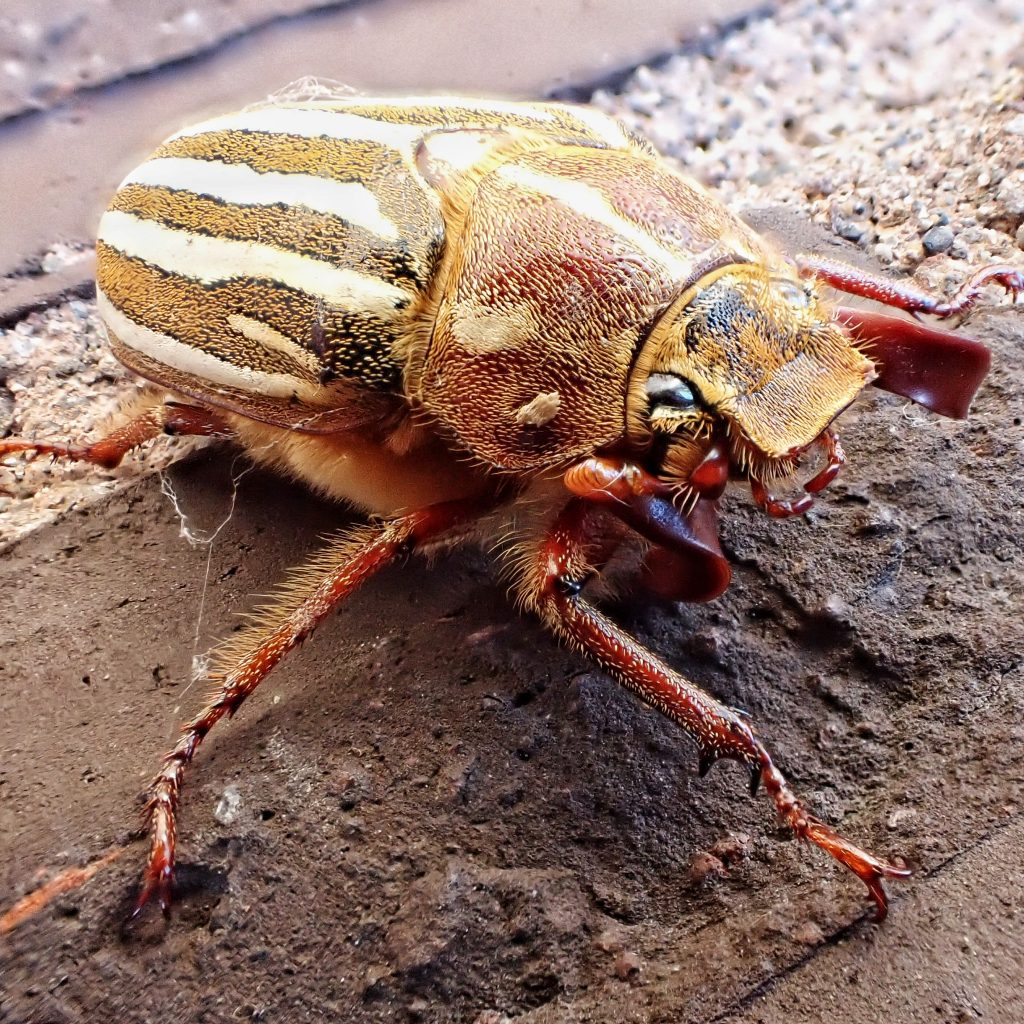
Polyphylla decemlineata can be serious agricultural pests, because the larvae feed on the roots of plants and trees, and a large infestation can kill the affected crop. Usually by the time the infestation is noticed it’s too late to save the plants or trees. And, because the larvae take at least two years (and up to four) to complete their instars, they can cover a lot of ground and wreak havoc over large areas. Apparently the only recourse the grower has is to remove all of the afflicted specimens and treat that ground with insecticide for at least two years straight before replanting. But, for the most part, their numbers don’t reach the level to cause serious problems, because they feed on such a wide variety of plant roots.
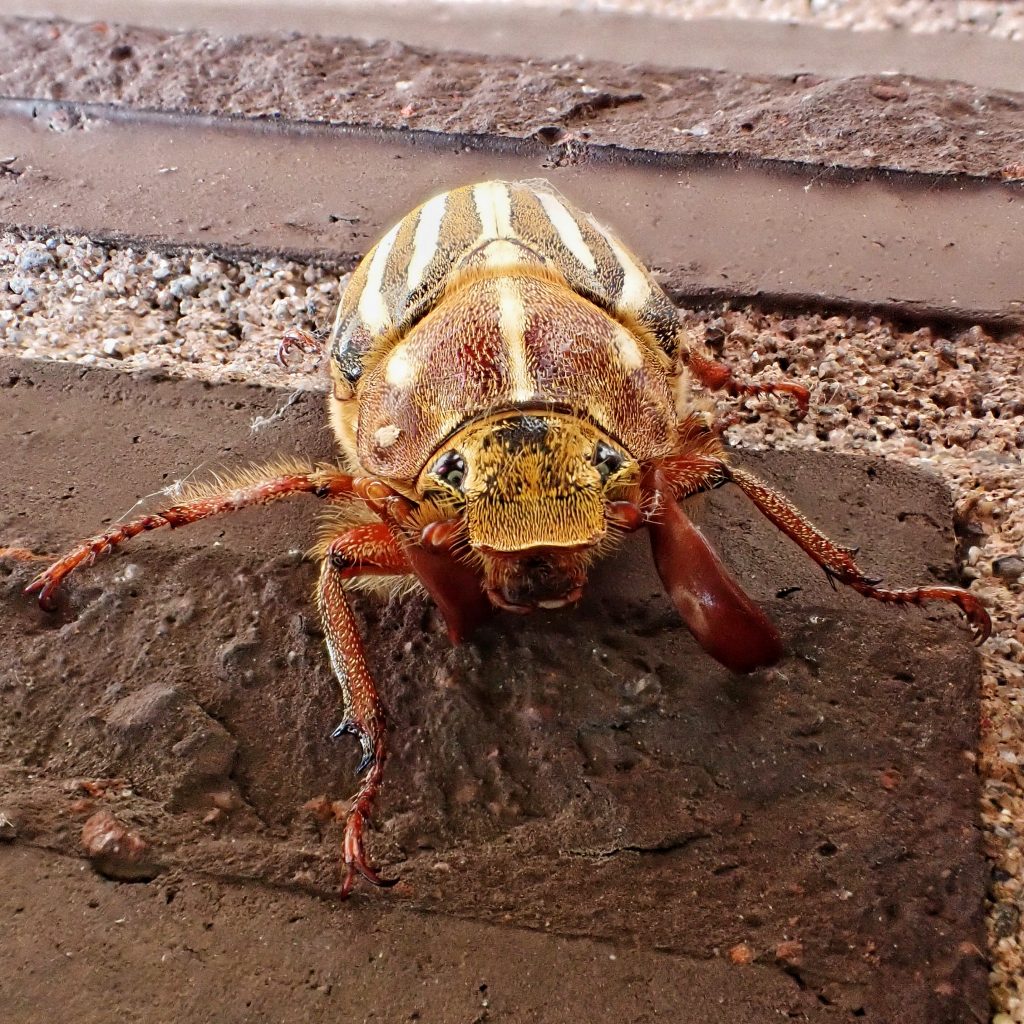
As for how one nearly killed me; I was running late for work on the graveyard shift at the local aluminum smelter, therefore riding my motorcycle at a speed nearly double the legal limit, sans helmet because of the heat, when one of these large, dense bugs (the identity of which I deduced from the remnants of elytra I found stuck to my glasses, although I suppose it’s possible it was Polyphylla crinita, since I didn’t find a pronotum and wouldn’t have known what to look for in those days anyway), hit me in the forehead. For a moment I wondered if I’d been shot. I saw stars, and wobbled quite a bit, but managed to maintain control of the bike as I slowed way down. I barely made it to work on time, and I never rode without a helmet again.
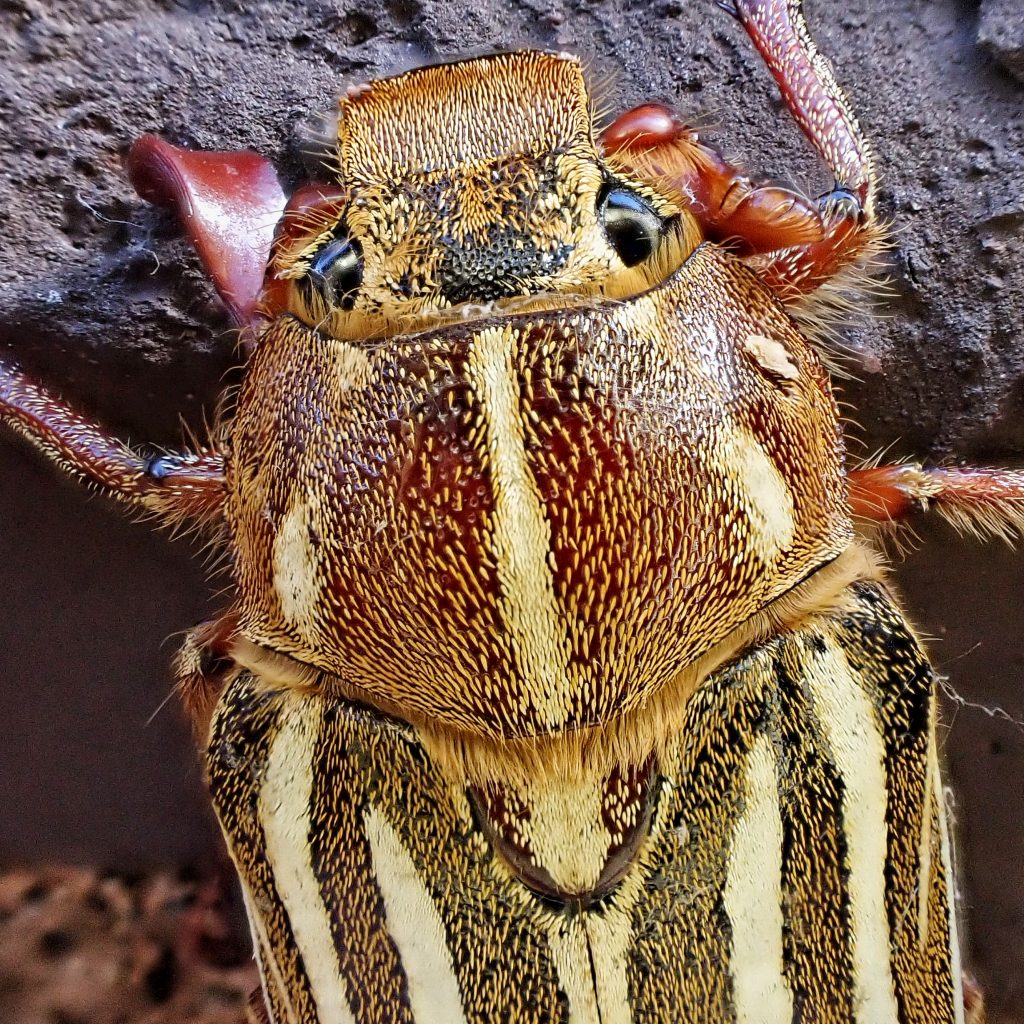
My thanks to Merrill Peterson (author of “Pacific Northwest Insects”, the gold standard for regional field guides, and without which I seriously doubt I’d be attempting this project) for confirming my identification
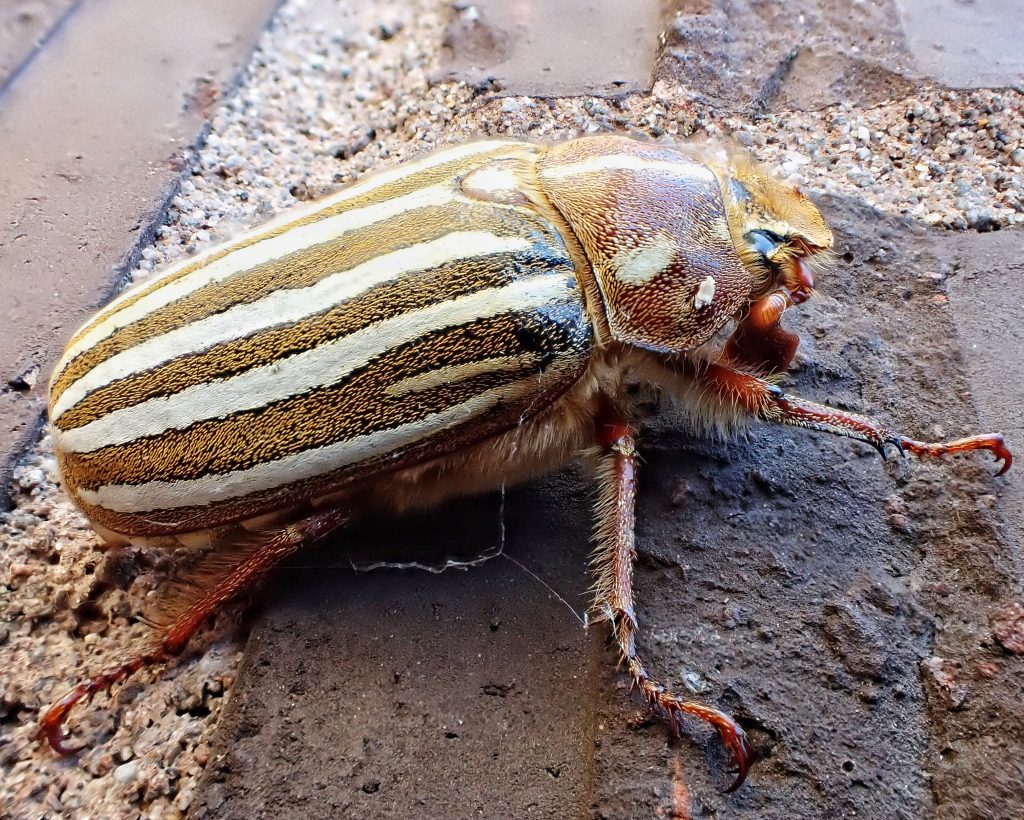
Description-Large (18-35mm) brown beetle with 4 long and one short smooth, white stripes on each elytron; pronotum with 3 white, often diffuse, stripes of varying lengths, and lacks long hairs except for a decumbent fringe at the leading and hind margin; entire beetle covered with short, light brown hairs; males have a fan of plates at the end of their antenna.
Similar species–P. crinita , P. modulata, and P. nigra have long, erect hairs on pronotum; P. arguata usually has less white, and less defined stripes, and is found in se Idaho.
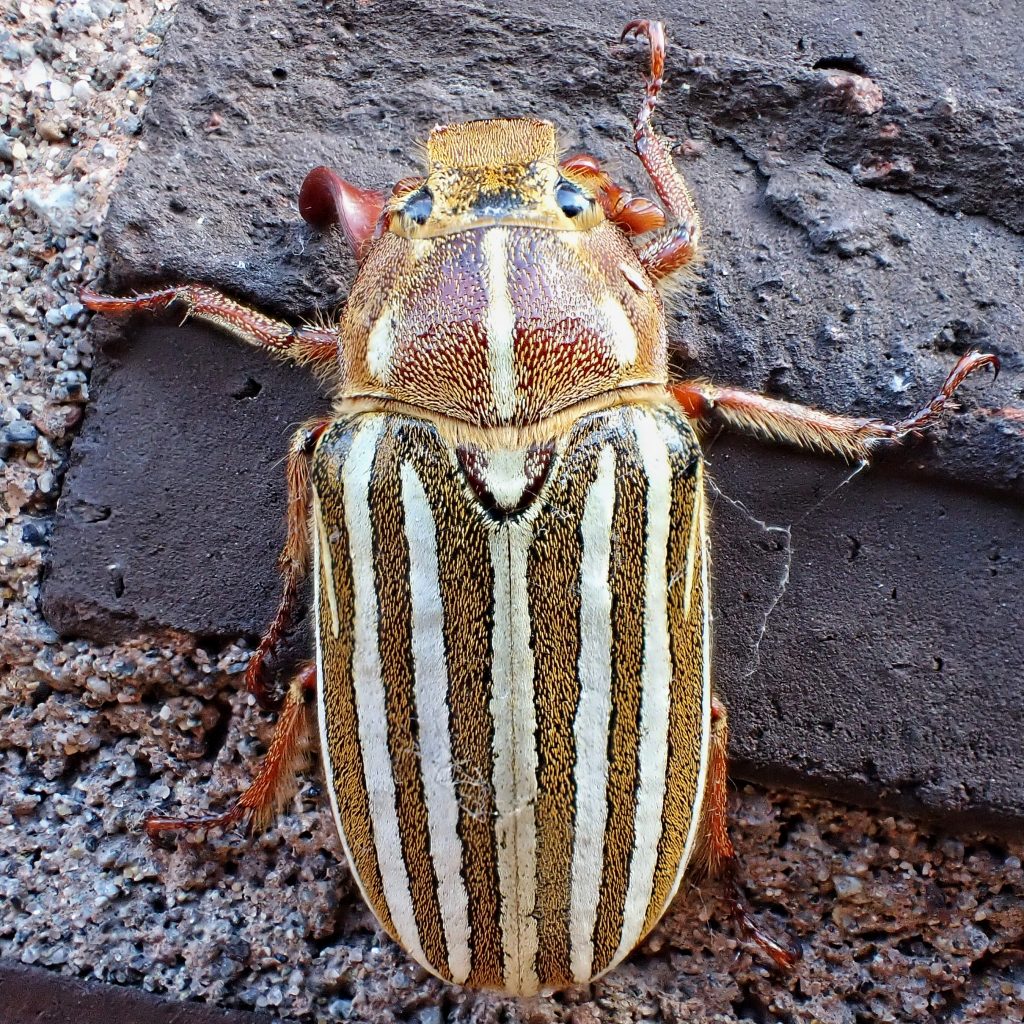
Habitat-Wherever there is vegetation.
Range-Western North America; region wide
Eats-Larva are generalists feeding on the roots of many different species of agricultural and orchard crops, grasses, forbs, shrubs, and trees; adults feed on the foliage of a wide variety of shrubs and trees.
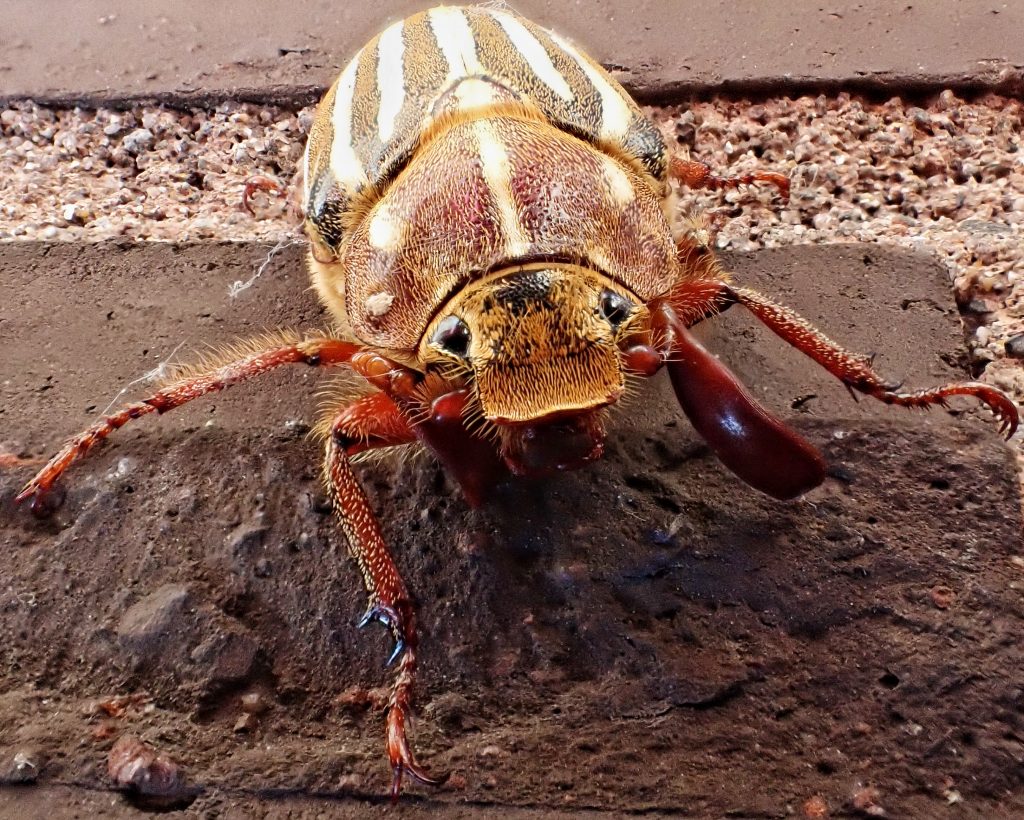
Eaten by-Scoliid wasps and some nematodes parasitize the larvae, and moles and other burrowing insectivores feed on them; adults are parasitized by some tachinid flies, and are prey for many insectivorous birds and mammals.
Reproduction-Oval, dully cream colored eggs are laid near host plants and the larvae burrow underground to the roots; larvae can grow up to 2” long, and pupate in underground chambers after 2-4 years; adults live 6-12 weeks.
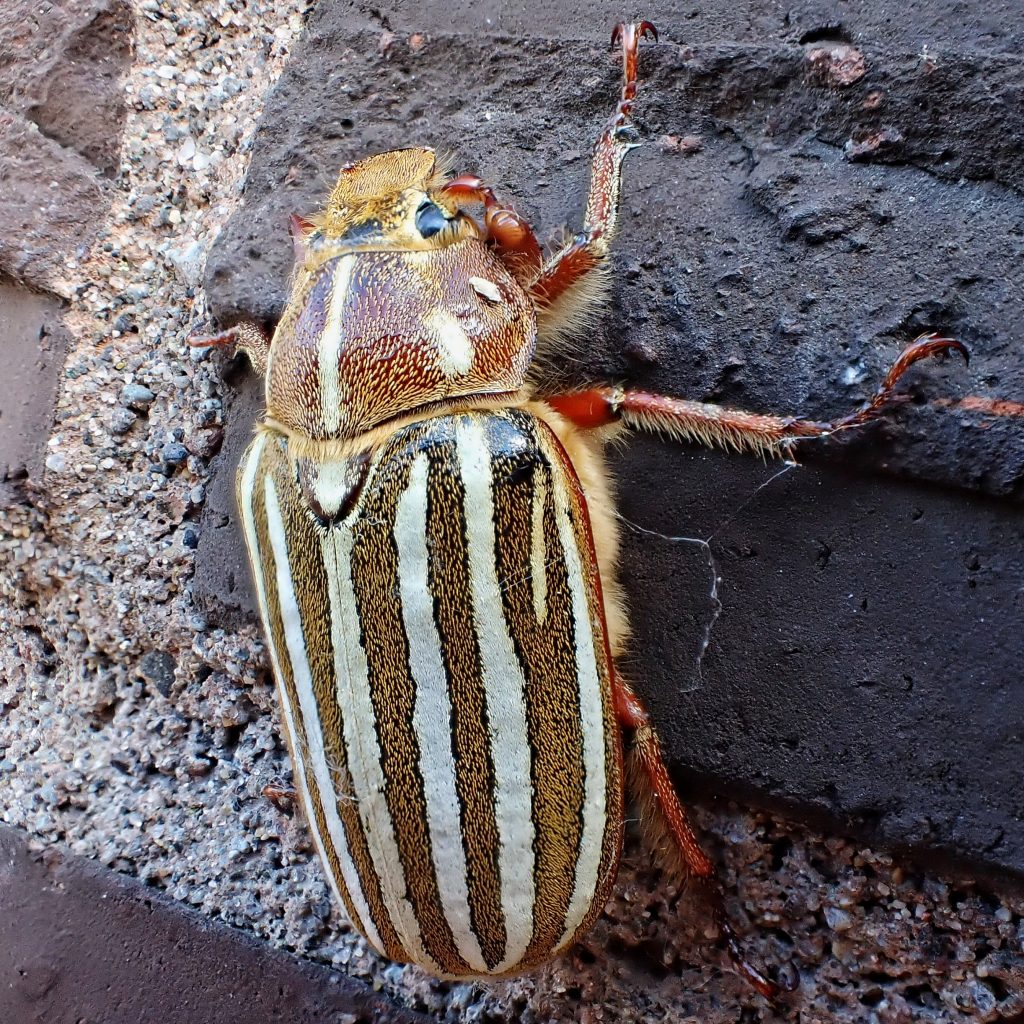
Adults active-June through August
Etymology of names–Polyphylla is Greek for ‘many leaves’, which probably refers to the thin plates at the end of male antennae. The specific epithet decemlineata is from the Latin for ‘10 lines’, which refers to the combined number of white lines on both elytra.
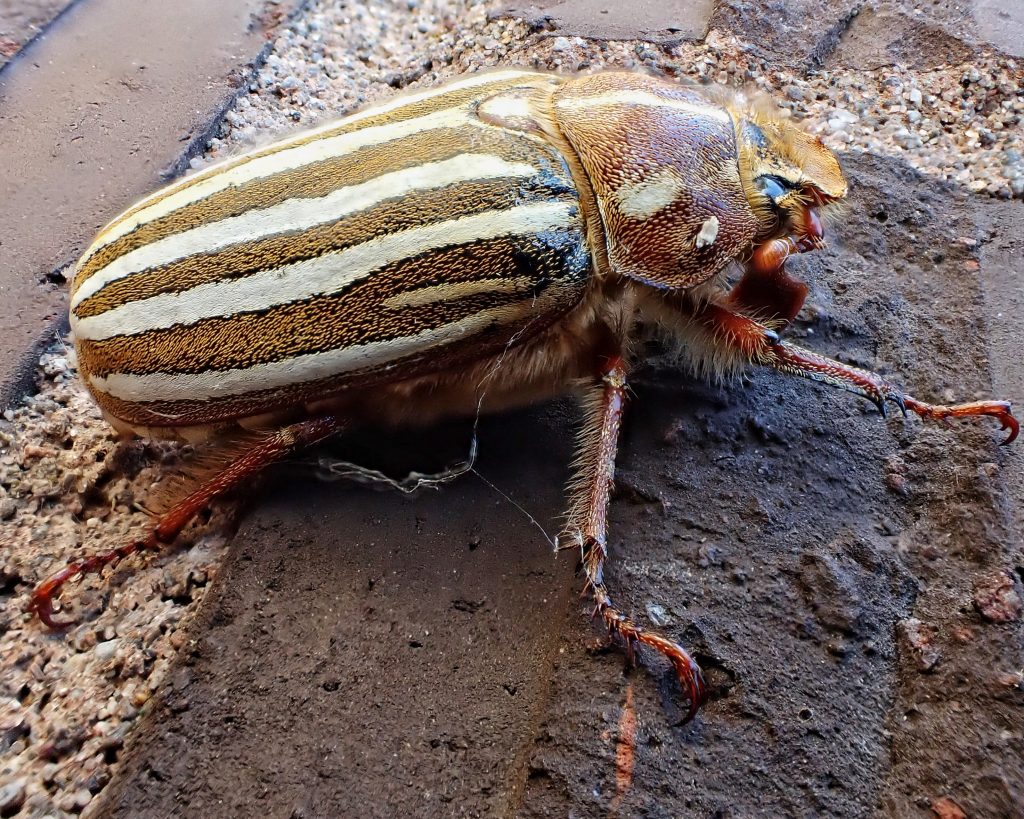
https://bugguide.net/node/view/23563
https://wiki.bugwood.org/HPIPM:Tenlined_June_Beetle
https://www.thedailygarden.us/garden-word-of-the-day/ten-lined-june-beetles
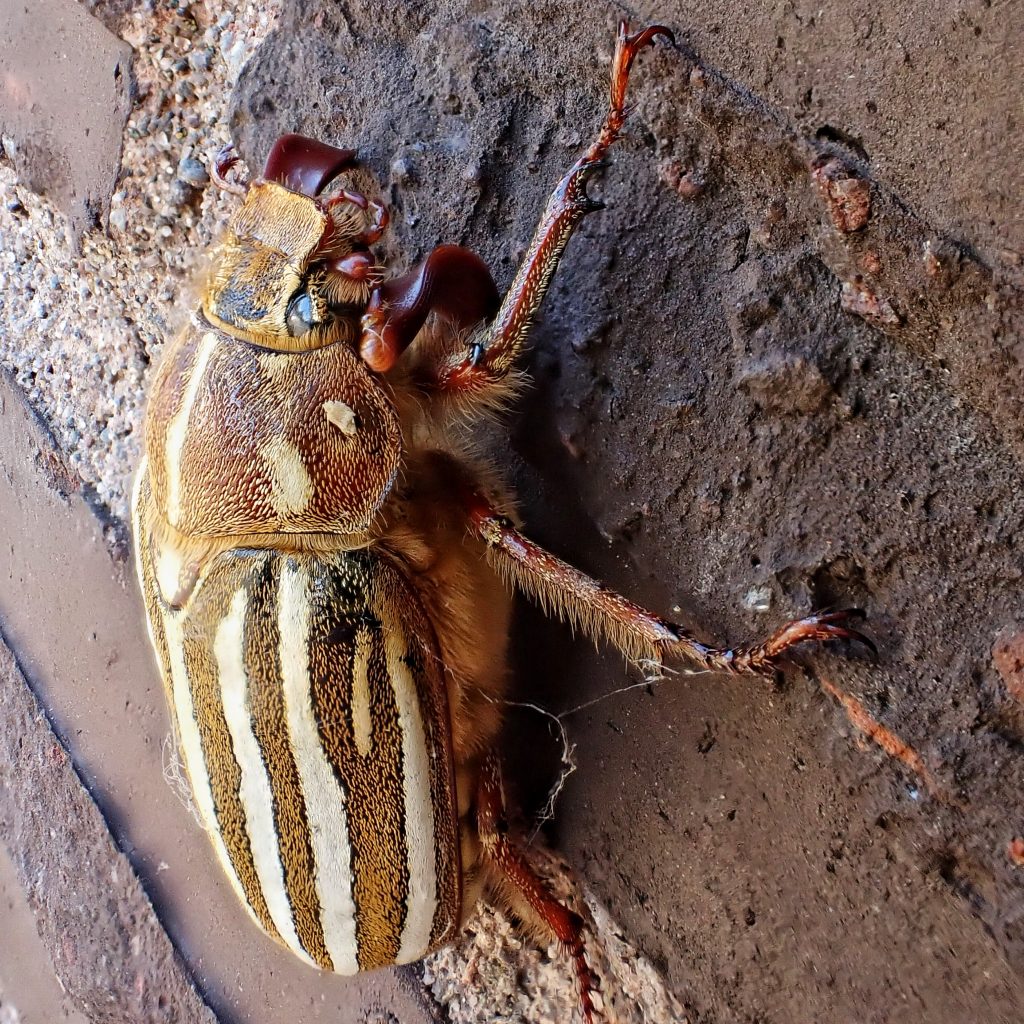
This June bug is a snappy dresser! 🤩 So glad that one taught you to wear your helmet! 😉👍